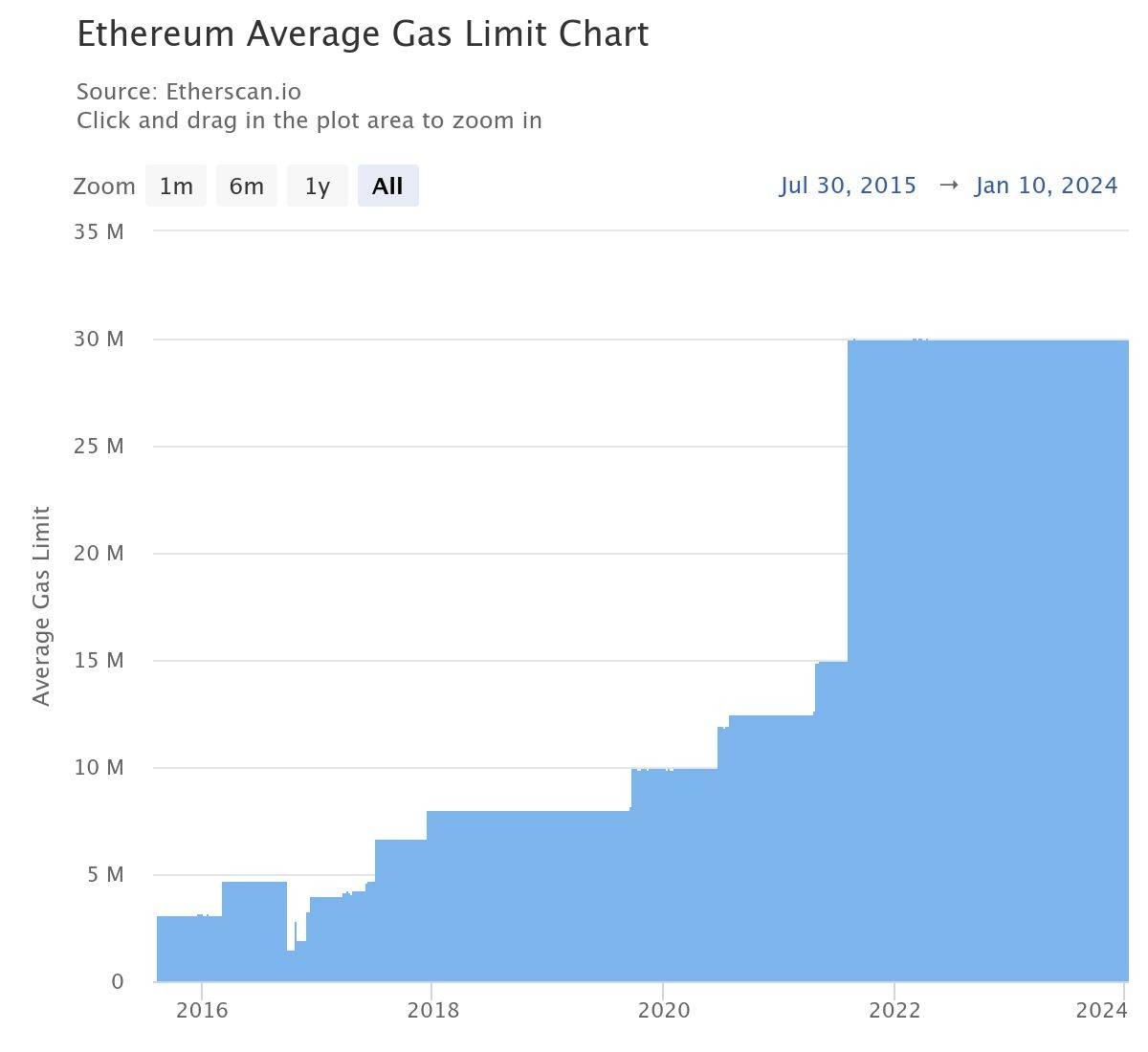
Ethereum has reached a notable milestone by increasing its gas limit beyond 30 million for the first time since switching to proof-of-stake (PoS), marking a new chapter in the network's scaling journey.
The gas limit, which determines the network's transaction processing capacity per block, now averages 31.5 million gas units. This represents Ethereum's first major gas adjustment since 2021, when it doubled from 15 million to 30 million under the previous proof-of-work system.
A Different Approach to Scaling
Unlike previous adjustments that required hard forks, the current increase was implemented through validator consensus, with over 50% supporting the change. This demonstrates Ethereum's newfound ability to scale dynamically under PoS.
The upgrade arrives alongside other improvements, including the upcoming Pectra upgrade scheduled for March. Pectra aims to double Layer 2 capacity by increasing the blob target from 3 to 6, potentially making transactions more cost-effective for users.
Community Split on the Path Forward
The Ethereum community remains divided on future gas limit increases. While some developers advocate for an aggressive expansion up to 100%, others recommend a more measured approach, suggesting a 20% increase to 36 million gas as an initial step.
Ethereum co-founder Vitalik Buterin has proposed making blob targets staker-voted, allowing for flexible scaling without requiring hard forks. This approach could enable the network to adapt more readily to technological advances while maintaining decentralization.
Technical Implications
The gas limit increase brings both opportunities and challenges. While it enhances the network's transaction capacity, some experts, including Ethereum Foundation's Toni Wahrstätter, warn about potential network stability risks.
These changes arrive as part of a broader scaling strategy, which includes developments like EIP-4444 for history expiry, statelessness improvements, and client optimizations. These upgrades aim to support larger gas limits while preserving network health.
The coming months will reveal how these changes impact transaction fees, network stability, and overall adoption. As Ethereum continues its evolution, this gas limit increase represents a key step in its scaling roadmap.